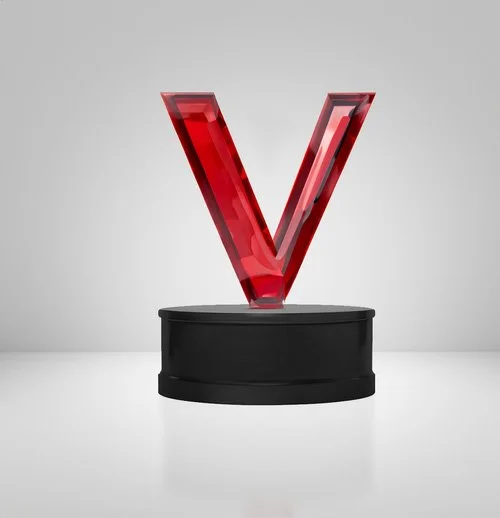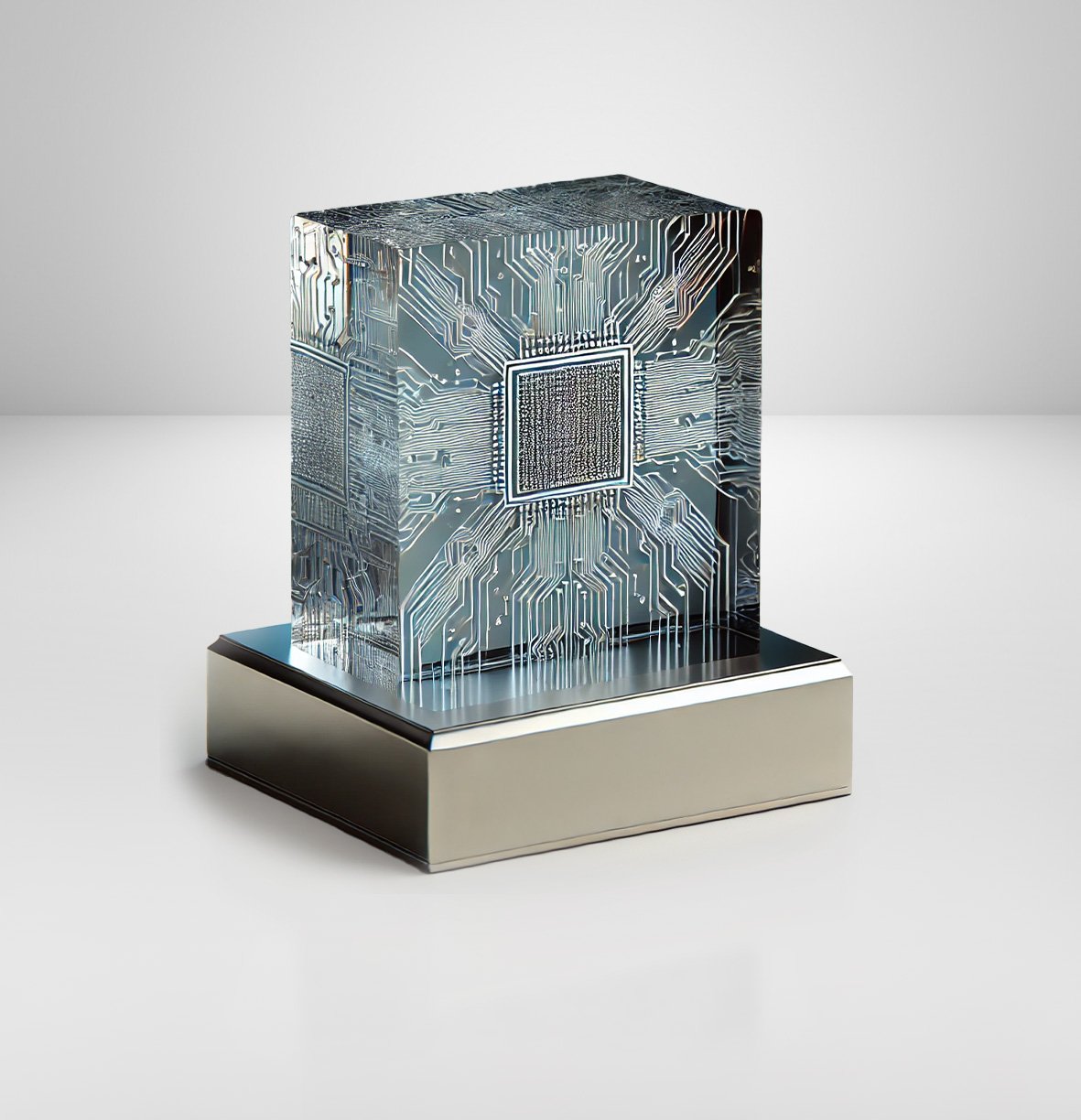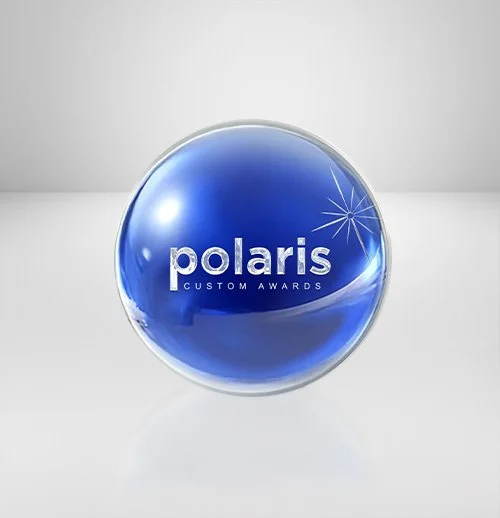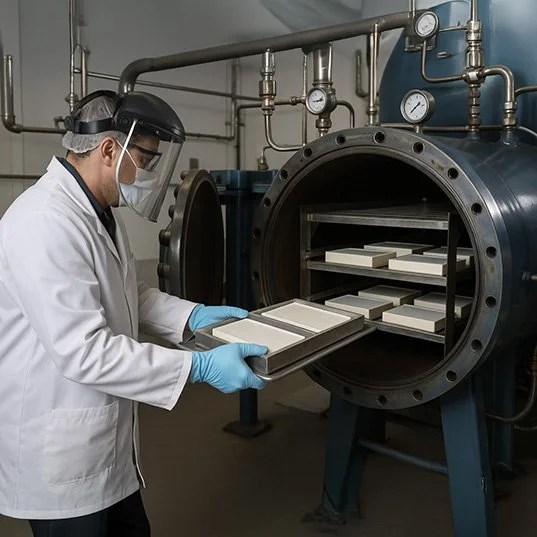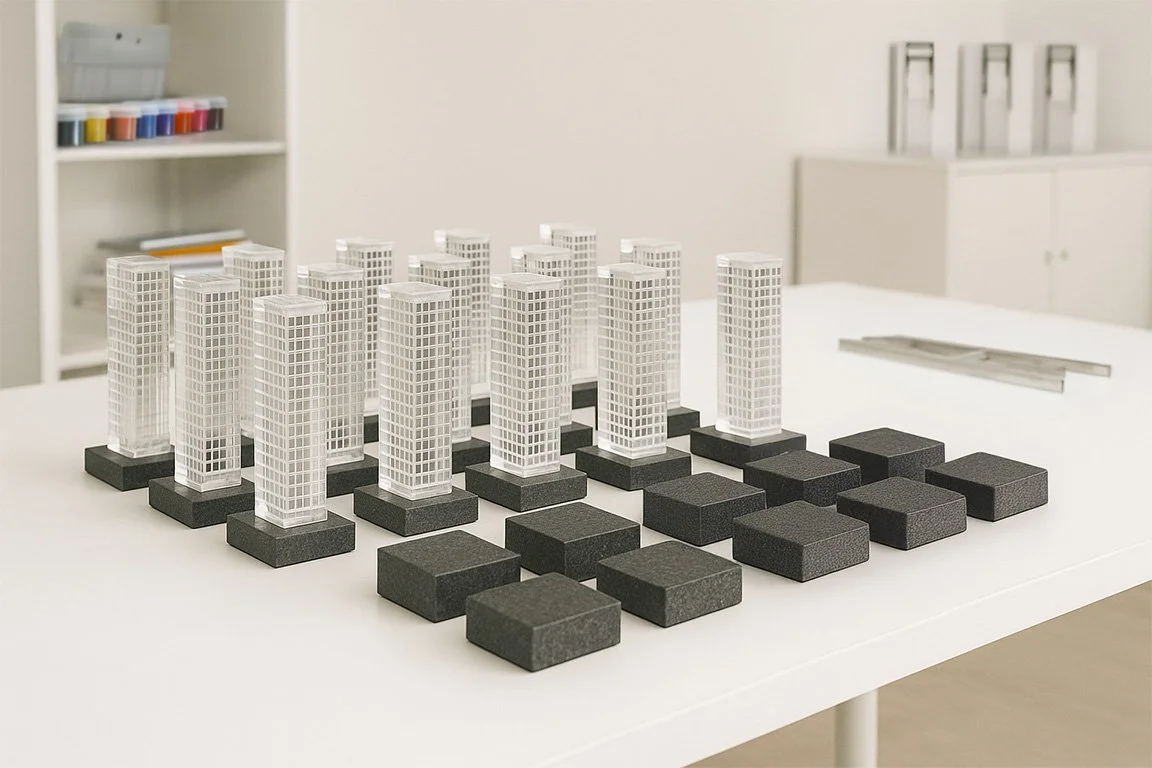The Complete Guide to Deal Toys
This guide explains what deal toys are, who receives them, materials, pricing, and timelines.
If you’re ready to start a project now, contact us here. For more information, see our Custom Deal Toys page for quotes and examples.
In finance, “deal toy” gets used casually. You’ll hear it at closing dinners, see it on pitch decks, and find it in Google results. We use this term as well, but we prefer a more intentional term: deal marker. When these pieces are done right, they aren’t novelties—they’re symbols of achievement: tangible reminders of late nights, tough negotiations, and major wins.
Whether you’re ordering your first or your fiftieth, this guide explains what deal toys are, who receives them, how they’re made, what they cost, and how to make yours memorable.
What is a Deal Toy?
A deal toy—also called a financial tombstone—is a custom, physical piece created to commemorate a specific business milestone. Common use cases include:
M&A closings
IPOs / SPAC listings
PE / VC fundraises and credit deals
Real estate transactions
Recapitalizations and restructurings
Most pieces include key information (the “tombstone” text), but a memorable deal marker goes further—using design, material, and symbolism to celebrate the story behind the transaction.
We call them deal markers because the best ones don’t just sit on a shelf—they tell a story and mark the moment an idea became real.
Want to take a deep dive into the world of deal toys? Check out the inside industry knowledge from the world’s leading expert on the topic: Deal Toy Expert
Who Receives Deal Toys—and Why?
Who typically orders: investment banks and advisors, legal counsel, corporate development, private equity, and real estate sponsors.
Who typically receives: internal teams (analysts to MDs/partners), legal teams, executives on buy/sell sides, clients/board members, and key stakeholders.
Why it matters: beyond celebration, deal markers are relationship builders and brand assets—a lasting reminder of who made the deal happen.
Deal Toy Design: From Simple to Sculptural
Some deals call for a clean Lucite or crystal rectangle with crisp artwork. Others deserve a custom sculpture—a miniature building, an industry icon, or a shape tied to geography or strategy.
At Polaris, every piece is designed from scratch—no templates, no shortcuts.
The design should fit the deal and recipients, not force the deal to fit
a catalog shape.
Materials Guide:
Lucite, Crystal, Resin, Metal and Wood
Lucite (PMMA)
Lightweight, durable, and ideal for embedments (logos, site plans, models). Excellent for color and layered visuals. Often ships from North America—helpful for speed and shipping costs.
Crystal (optical/K9)
Weighty, premium presence with deep sand-etching and polished bevels. Formal look and a refined gift presentation (typically boxed). Often produced in Asia; shipping is heavier.
Resin
Best for custom-molded shapes and replicas (buildings, vehicles, complex forms). Painted and assembled in stages for rich detail.
Metal or Wood (often as accents/bases)
Adds weight, contrast, and texture. Great for hybrid builds with Lucite or crystal.
The material should match your story, audience, timeline, and budget. A good partner explains tradeoffs; they don’t push what’s easiest to produce.
How Deal Toys are Made
Small-batch, hand-finished processes vary by material:
Lucite: Hand-poured acrylic in molds; artwork or 3D elements embedded in layers; curing and hand polishing.
Crystal: Blocks are cut, beveled, deeply etched (with optional color-fill), then polished.
Resin: Custom molds; casting, curing, precision painting, and assembly.
Metal: Cast or CNC-machined; finished, etched, or plated as required.
We’ve worked on factory floors—pouring Lucite, cutting crystal, casting resin—so when you work with Polaris, you’re working with real experts. This means our designs are reliably manufacturable and timelines are realistic.
We treat each project as unique—there’s no cookie-cutter approach.
And we’re not transactional—we care about getting the deal toy right, ensuring our quality of service, our designs and the products we provide are all worthy of what they represent.
What Do Deal Toys Cost?
Pricing depends on material, size, complexity, and quantity.
Typical ranges:
Basic Lucite/crystal rectangles (small): from ~$50–$60/ea; larger: ~$75–$200/ea
Most custom designs: ~$100–$200/ea
High-end sculptural/hybrid pieces: ~$150–$300+ per piece
Setup and shipping are separate line items.
We quote all-in pricing up front—no surprises at invoice time.
And because of our manufacturing ties and operational structure, we keep our costs low—so your costs are low. We ensure you get the most bang for the buck with every deal toy order.
Do You Need a Prototype?
The vast majority of our business is repeat business. Once you work with Polaris, no other deal toy provider can compare.
If we’re doing a complex build, absolutely, we recommend reviewing the prototype, ideally by having the prototype shipped to you for in hand review. For simple or repeat designs, it’s often not necessary for you to review the prototype, but we’ll never discourage it. If timing is tight, we can always send photos and even a video of the prototype.
Timeline & Rush Orders
Most projects take 4–6 weeks from concept to delivery. Because we work directly with trusted factories, rush paths are often possible. If it’s feasible, we’ll make it happen—without rush fees.
Actual production time is generally one week for a prototype and two weeks for the full order when we’re doing most crystal and Lucite orders. 3D buildings and other complex pieces will take longer. Just communicate your deadline and we’ll ensure our designs match the timeline.
Why Teams Keep Coming Back to Polaris
You work directly with the creative team, not a call center.
Fast responses, clear specs, and proactive scheduling.
We think like designers and manufacturers—so renderings become reality.
We don’t just take orders—we make sure it’s done right.
Prototyping is an essential and integral part of small batch custom manufacturing. We always make a prototype before running the full order, so we can review every detail and make sure the prototype matches the design and lives up to expectations. The real question is, do you need to review the prototype? The answer? It depends.


